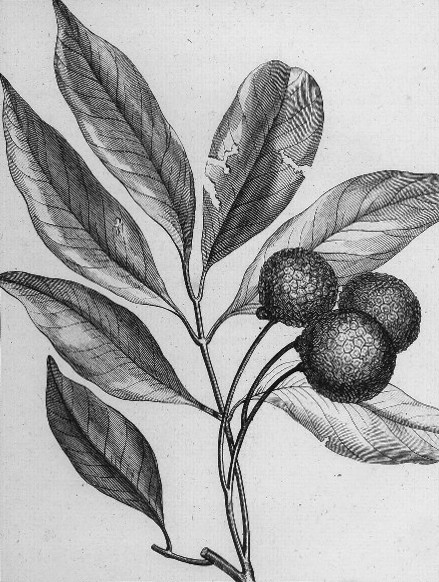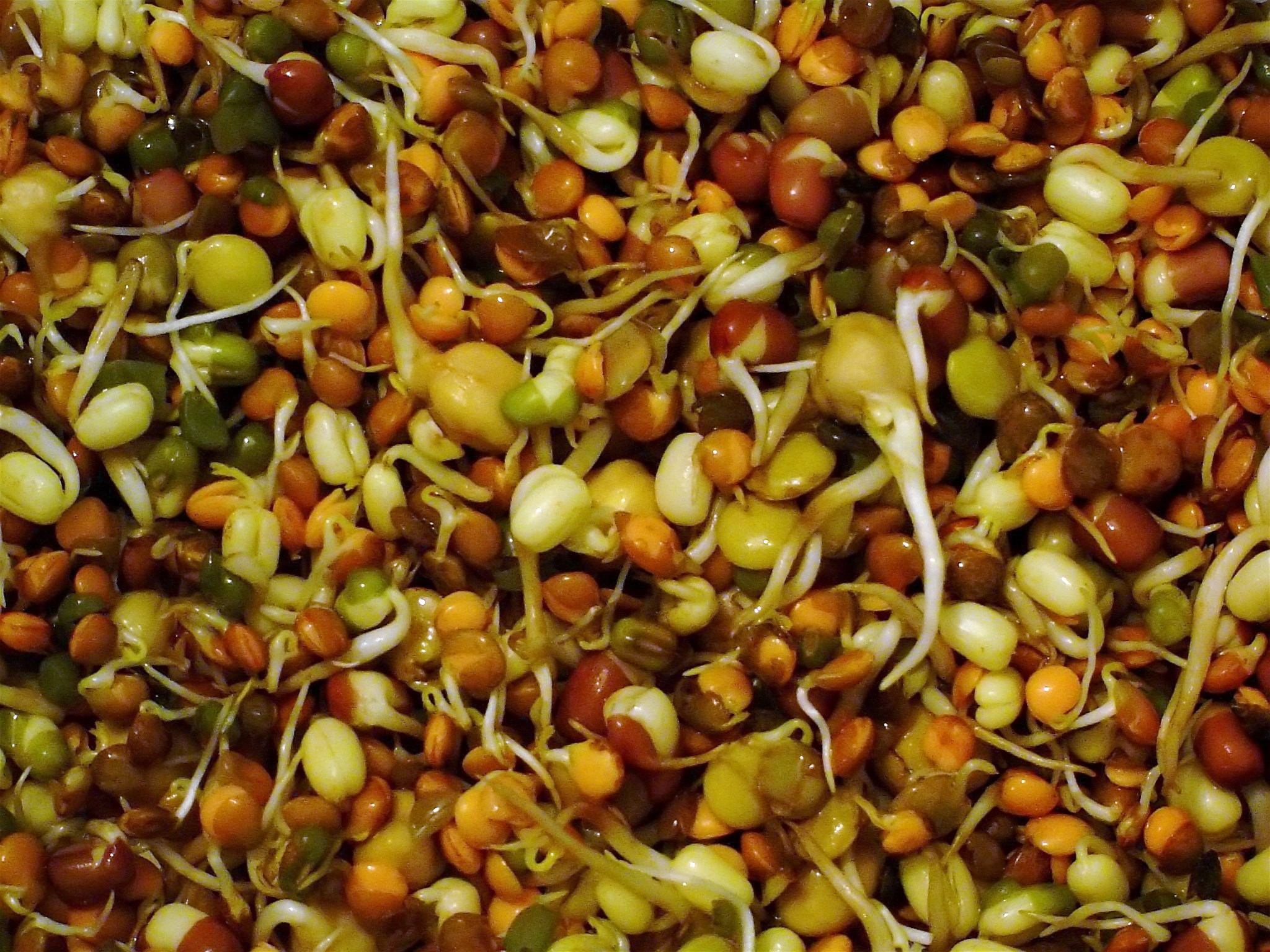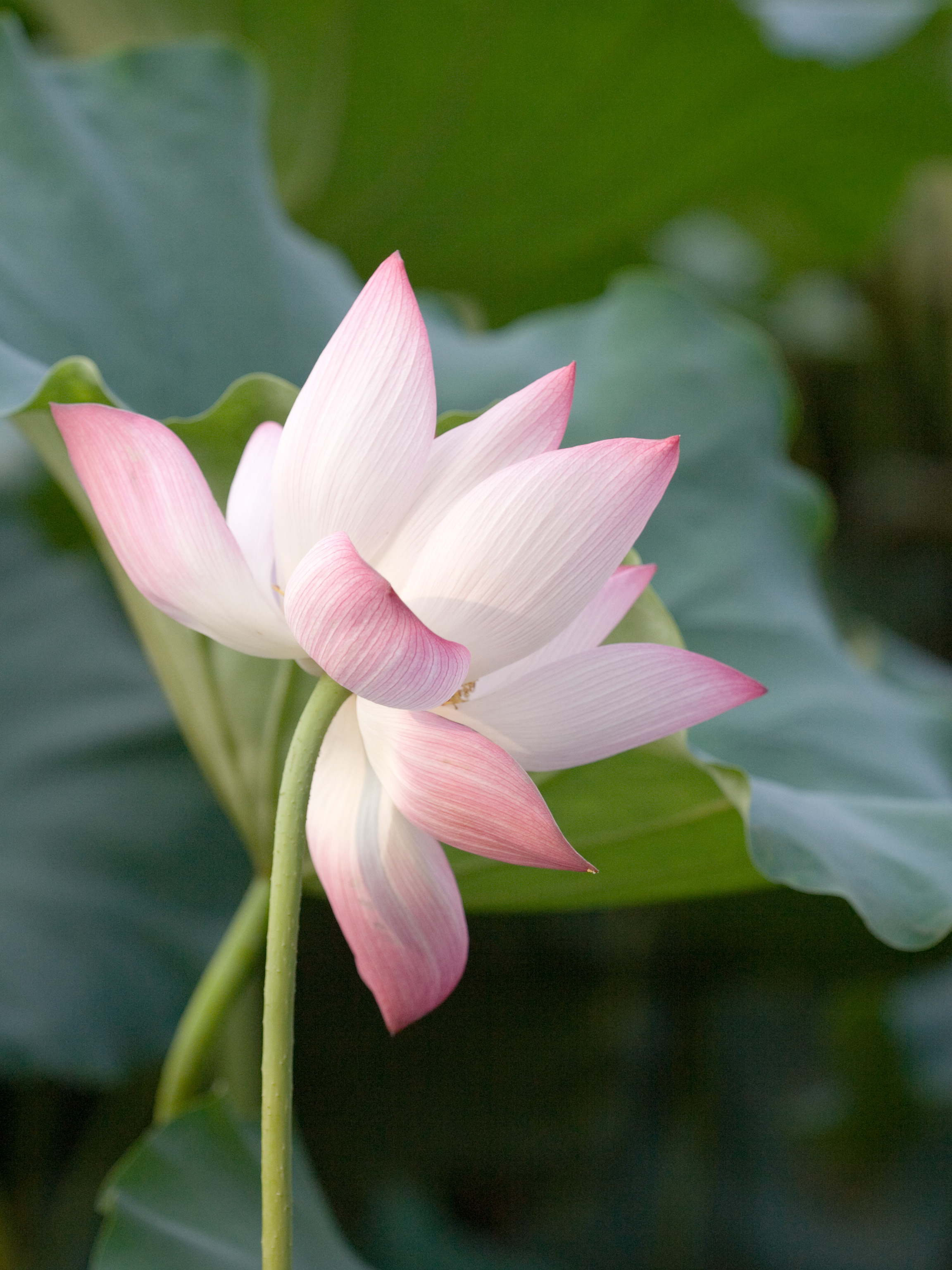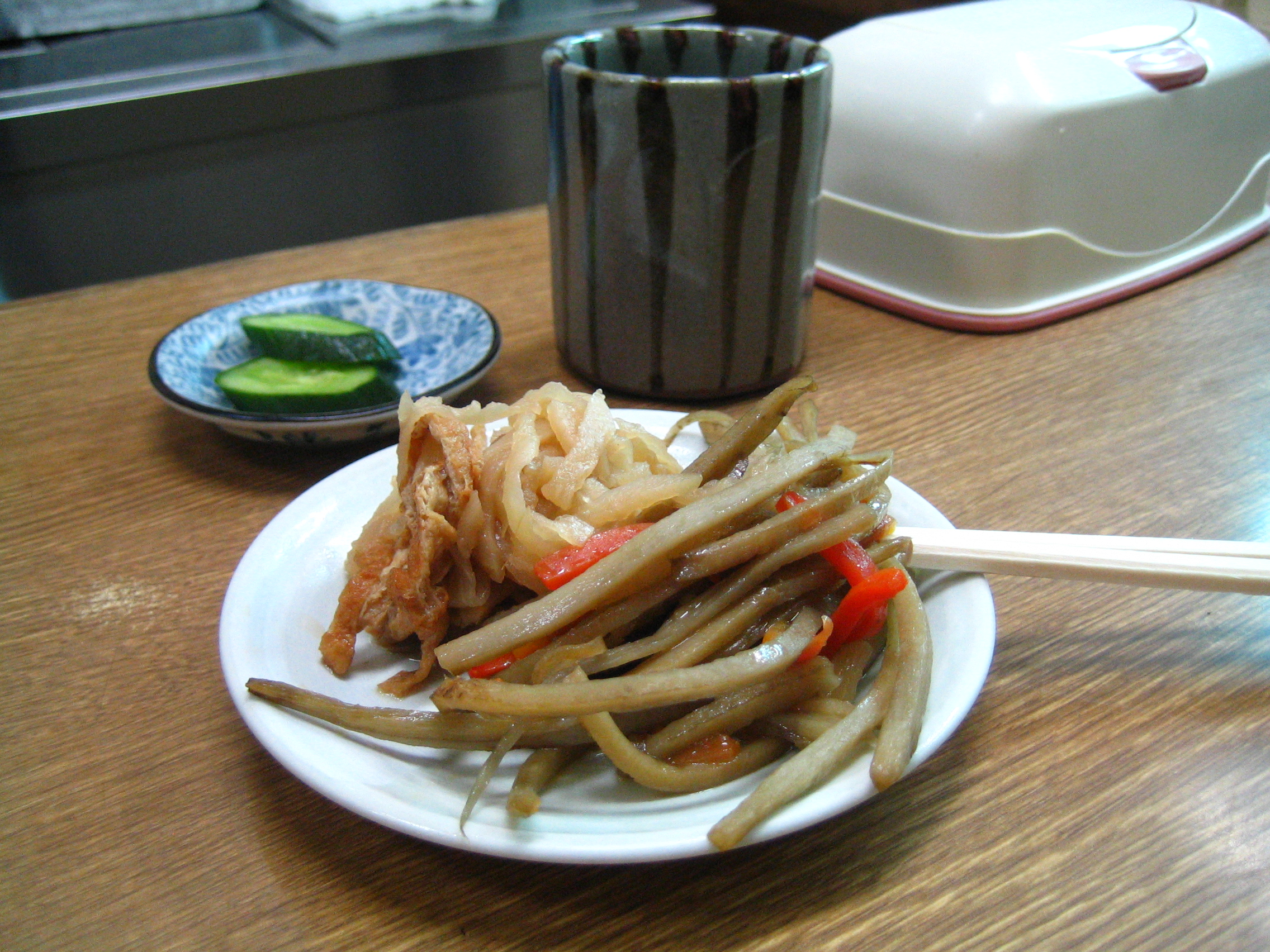|
Imperial Japanese Rations
Imperial Japanese rations were the field rations issued by Imperial Japan in World War II, and which reflected the culture of the Japanese military. Rations had to be stout, durable, simple, sturdy and had to survive without refrigeration for long periods of time. Typically each ration was served in the field in canned food boxes, and cooked near the battlefield. The mess tin was known as a ''han-gou''. The rations issued by the Imperial Japanese Government usually consisted of rice with barley, meat or fish, pickled or fresh vegetables, umeboshi, shoyu sauce, miso or bean paste, and green tea. A typical field ration would have of rice, usually mixed with barley to combat nutritional deficiencies such as beriberi. Often, soldiers would forage for fresh fruit to provide vitamins. Typically ¼ cup of canned tuna, or sausages, and/or squid would be cooked from either captured locations or hunting in the nearby area. Preserved foods from Japan typically were issued sparingly. Oth ... [...More Info...] [...Related Items...] OR: [Wikipedia] [Google] [Baidu] |
Field Ration
A field ration is a type of prepackaged military ration designed to be easily and quickly prepared and consumed in the field, in combat, at the front line, or where eating facilities are otherwise unavailable. Field rations are primarily used by military forces, though they are also sometimes distributed to civilians as part of humanitarian aid and emergency management. They differ from garrison rations and field kitchen provisions, which are intended for where proper meals can be supplied and prepared with relative ease and safety, such as in the rear where logistics are steady and fresh food can be supplied. They are similar to, but distinct from, other purpose-designed long-lasting types of food or rations such as emergency rations, humanitarian daily rations, and camping food. Names used for field rations vary by military and type, and include combat ration, ration pack, battle ration, iron ration, food packet, operational ration pack, or meal ready-to-eat (MRE); the la ... [...More Info...] [...Related Items...] OR: [Wikipedia] [Google] [Baidu] |
Sausages
A sausage is a type of meat product usually made from ground meat—often pork, beef, or poultry—along with Edible salt, salt, spices and other flavourings. Other ingredients, such as grains or breadcrumbs, may be included as fillers or extenders. When used as an uncountable noun, the word ''sausage'' can refer to the loose sausage meat, which can be used loose, formed into patties, or stuffed into a casing. When referred to as "a sausage", the product is usually cylindrical and enclosed in a casing. Typically, a sausage is formed in a casing (sausage), casing traditionally made from Gut (anatomy), intestine, but sometimes from synthetic materials. Sausages that are sold raw are cooked in many ways, including pan-frying, broiling and barbecuing. Some sausages are Cooking, cooked during processing, and the casing may then be removed. Sausage making is a traditional food preservation technique. Sausages may be preserved by curing (food preservation), curing, Drying (food), ... [...More Info...] [...Related Items...] OR: [Wikipedia] [Google] [Baidu] |
Beans
A bean is the seed of some plants in the legume family (Fabaceae) used as a vegetable for human consumption or animal feed. The seeds are often preserved through drying (a ''pulse''), but fresh beans are also sold. Dried beans are traditionally soaked and boiled, and used in many traditional dishes throughout the world. They can be cooked in many different ways, however, including frying and baking. The unripe seedpods of some varieties are also eaten whole as green beans or ''edamame'' (immature soybean), but many fully ripened beans contain toxins like Phytohaemagglutinin, phytohemagglutinin and require cooking. Terminology The word "bean" and its Germanic cognates (e.g. German language, German ''wikt:Bohne#Noun, Bohne'') have existed in common use in West Germanic languages since before the 12th century, referring to Vicia faba, broad beans, chickpeas, and other pod-borne seeds. This was long before the New World genus ''Phaseolus'' was known in Europe. With the Colum ... [...More Info...] [...Related Items...] OR: [Wikipedia] [Google] [Baidu] |
Lychee
Lychee ( , ; ''Litchi chinensis''; ) is a monotypic taxon and the sole member in the genus ''Litchi'' in the soapberry family, Sapindaceae. There are three distinct subspecies of lychee. The most common is the Indochinese lychee found in South China, Malaysia, and northern Vietnam. The other two are the Philippine lychee (locally called ''alupag'' or ''matamata'') found only in the Philippines and the Javanese lychee cultivated in Indonesia and Malaysia. The tree has been introduced throughout Southeast Asia and South Asia. Cultivation in China is documented from the 11th century. China is the main producer of lychees, followed by India, Vietnam, other countries in Southeast Asia, other countries in South Asia, Madagascar, and South Africa. A tall evergreen tree, it bears small fleshy sweet fruits. The outside of the fruit is a pink-red, rough-textured soft shell. Lychee seeds contain methylene cyclopropyl glycine which has caused hypoglycemia associated with outbreaks of e ... [...More Info...] [...Related Items...] OR: [Wikipedia] [Google] [Baidu] |
Mandarin Orange
A mandarin orange (''Citrus reticulata''), often simply called mandarin, is a small, rounded citrus tree fruit. Treated as a distinct species of orange, it is usually eaten plain or in fruit salads. The mandarin is small and oblate, unlike the roughly spherical sweet orange (which is a mandarin- pomelo hybrid). The taste is sweeter and stronger than the common orange. A ripe mandarin orange is firm to slightly soft, heavy for its size, and pebbly-skinned. The peel is thin and loose, with little white mesocarp, so they are usually easier to peel and to split into segments. Hybrids have these traits to lesser degrees. The mandarin orange is tender and is damaged easily by cold. It can be grown in tropical and subtropical areas. According to genetic studies, the wild mandarin was one of the original citrus species; through breeding or natural hybridization, it is the ancestor of many hybrid citrus cultivars. With the citron and pomelo, it is the ancestor of the most commerci ... [...More Info...] [...Related Items...] OR: [Wikipedia] [Google] [Baidu] |
Peach
The peach (''Prunus persica'') is a deciduous tree first domesticated and Agriculture, cultivated in China. It bears edible juicy fruits with various characteristics, most called peaches and the glossy-skinned, non-fuzzy varieties called nectarines. Peaches and #Nectarines, nectarines are the same species, though they are regarded commercially as different fruits. The tree is regarded as handsome and is planted in gardens for its springtime blooms in addition to fruit production. The peach tree is relatively short lived, usually not exceeding twenty years of age. However, the peach fruit is regarded as a symbol of longevity in several East Asian cultures. The specific name ''persica'' refers to its widespread cultivation in Persia (modern-day Iran), from where it was transplanted to Europe and in the 16th century to the Americas. It belongs to the genus ''Prunus'', which also includes the cherry, apricot, almond, and plum, and which is part of the Rosaceae, rose family. The p ... [...More Info...] [...Related Items...] OR: [Wikipedia] [Google] [Baidu] |
Bean Sprout
Sprouting is the natural process by which seeds or spores germinate and put out shoots, and already established plants produce new leaves or buds, or other structures experience further growth. In the field of nutrition, the term signifies the practice of germinating seeds (for example, mung beans or sunflower seeds) to be eaten raw or cooked, which is considered more nutritious. Suitable seeds All viable seeds can be sprouted, but some sprouts, such as kidney beans, should not be eaten raw. Bean sprouts are a common ingredient across the world. They are particularly common in Eastern Asian cuisine. It typically takes one week for them to become fully grown. The sprouted beans are more nutritious than the original beans, and they require much less cooking time. There are two common types of bean sprouts: * Mung bean sprouts, made from greenish-capped mung beans * Soybean sprouts, made from yellow, large-grained soybeans Common sprouts used as food include: * ... [...More Info...] [...Related Items...] OR: [Wikipedia] [Google] [Baidu] |
Taro
Taro (; ''Colocasia esculenta'') is a root vegetable. It is the most widely cultivated species of several plants in the family Araceae that are used as vegetables for their corms, leaves, stems and Petiole (botany), petioles. Taro corms are a food staple in Culture of Africa, African, Oceania, Oceanic, East Asian, Southeast Asian and South Asian cultures (similar to Yam (vegetable), yams). Taro is believed to be one of the earliest cultivated plants. Common names The English term '':wikt:taro#English, taro'' was :wikt:taro#Maori, borrowed from the Māori language when James Cook, Captain Cook first observed ''Colocasia'' plantations in New Zealand in 1769. The form ''taro'' or ''talo'' is widespread among Polynesian languages:*''talo'': taro (''Colocasia esculenta'') – entry in the ''Polynesian Lexicon Project ... [...More Info...] [...Related Items...] OR: [Wikipedia] [Google] [Baidu] |
Lotus Root
''Nelumbo nucifera'', also known as the pink lotus, sacred lotus, Indian lotus, or simply lotus, is one of two extant species of aquatic plant in the family Nelumbonaceae. It is sometimes colloquially called a water lily, though this more often refers to members of the family Nymphaeaceae. The lotus belongs in the order Proteales. Lotus plants are adapted to grow in the flood plains of slow-moving rivers and delta areas. Stands of lotus drop hundreds of thousands of seeds every year to the bottom of the pond. While some sprout immediately and most are eaten by wildlife, the remaining seeds can remain dormant for an extensive period of time as the pond silts in and dries out. During flood conditions, sediments containing these seeds are broken open, and the dormant seeds rehydrate and begin a new lotus colony. It is cultivated in nutrient-rich, loamy, and often flooded soils, requiring warm temperatures and specific planting depths, with propagation via rhizomes, seeds, or ti ... [...More Info...] [...Related Items...] OR: [Wikipedia] [Google] [Baidu] |
Burdock
''Arctium'' is a genus of biennial plants commonly known as burdock, family Asteraceae. Native to Europe and Asia, several species have been widely introduced worldwide. Burdock's clinging properties, in addition to providing an excellent mechanism for seed dispersal, led to the invention of the hook and loop fastener. Description Plants of the genus ''Arctium'' have dark green leaves that can grow up to long. They are generally large, coarse, and ovate, with the lower ones being heart-shaped. They are woolly underneath. The leafstalks are generally hollow. ''Arctium'' species generally flower from July through October. Burdock flowers provide essential pollen and nectar for honeybees around August, when clover is on the wane and before the goldenrod starts to bloom. Burdock's clinging properties make it an excellent mechanism for seed dispersal. Taxonomy A large number of species have been placed in genus ''Arctium'' at one time or another, but most of them are now class ... [...More Info...] [...Related Items...] OR: [Wikipedia] [Google] [Baidu] |
Sweet Potato
The sweet potato or sweetpotato (''Ipomoea batatas'') is a dicotyledonous plant in the morning glory family, Convolvulaceae. Its sizeable, starchy, sweet-tasting tuberous roots are used as a root vegetable, which is a staple food in parts of the world. Cultivars of the sweet potato have been bred to bear tubers with flesh and skin of various colors. Moreover, the young shoots and leaves are occasionally eaten as greens. The sweet potato and the potato are in the order Solanales, making them distant relatives. Although darker sweet potatoes are often known as "yams" in parts of North America, they are even more distant from actual yams, which are monocots in the order Dioscoreales. The sweet potato is native to the tropical regions of South America in what is present-day Ecuador. Of the approximately 50 genera and more than 1,000 species of Convolvulaceae, ''I. batatas'' is the only crop plant of major importance—some others are used locally (e.g., ''I. aquatica'' "ka ... [...More Info...] [...Related Items...] OR: [Wikipedia] [Google] [Baidu] |
Coconut
The coconut tree (''Cocos nucifera'') is a member of the palm tree family (biology), family (Arecaceae) and the only living species of the genus ''Cocos''. The term "coconut" (or the archaic "cocoanut") can refer to the whole coconut palm, the seed, or the fruit, which botanically is a drupe, not a Nut (fruit), nut. Originally native to Central Indo-Pacific, they are now ubiquitous in coastal tropical regions and are a cultural icon of the tropics. The coconut tree provides food, fuel, cosmetics, folk medicine and building materials, among many other uses. The inner flesh of the mature seed, as well as the coconut milk extracted from it, forms a regular part of the diets of many people in the tropics and subtropics. Coconuts are distinct from other fruits because their endosperm contains a large quantity of an almost clear liquid, called "coconut water" or "coconut juice". Mature, ripe coconuts can be used as edible seeds, or processed for Coconut oil, oil and Coconut milk, ... [...More Info...] [...Related Items...] OR: [Wikipedia] [Google] [Baidu] |










